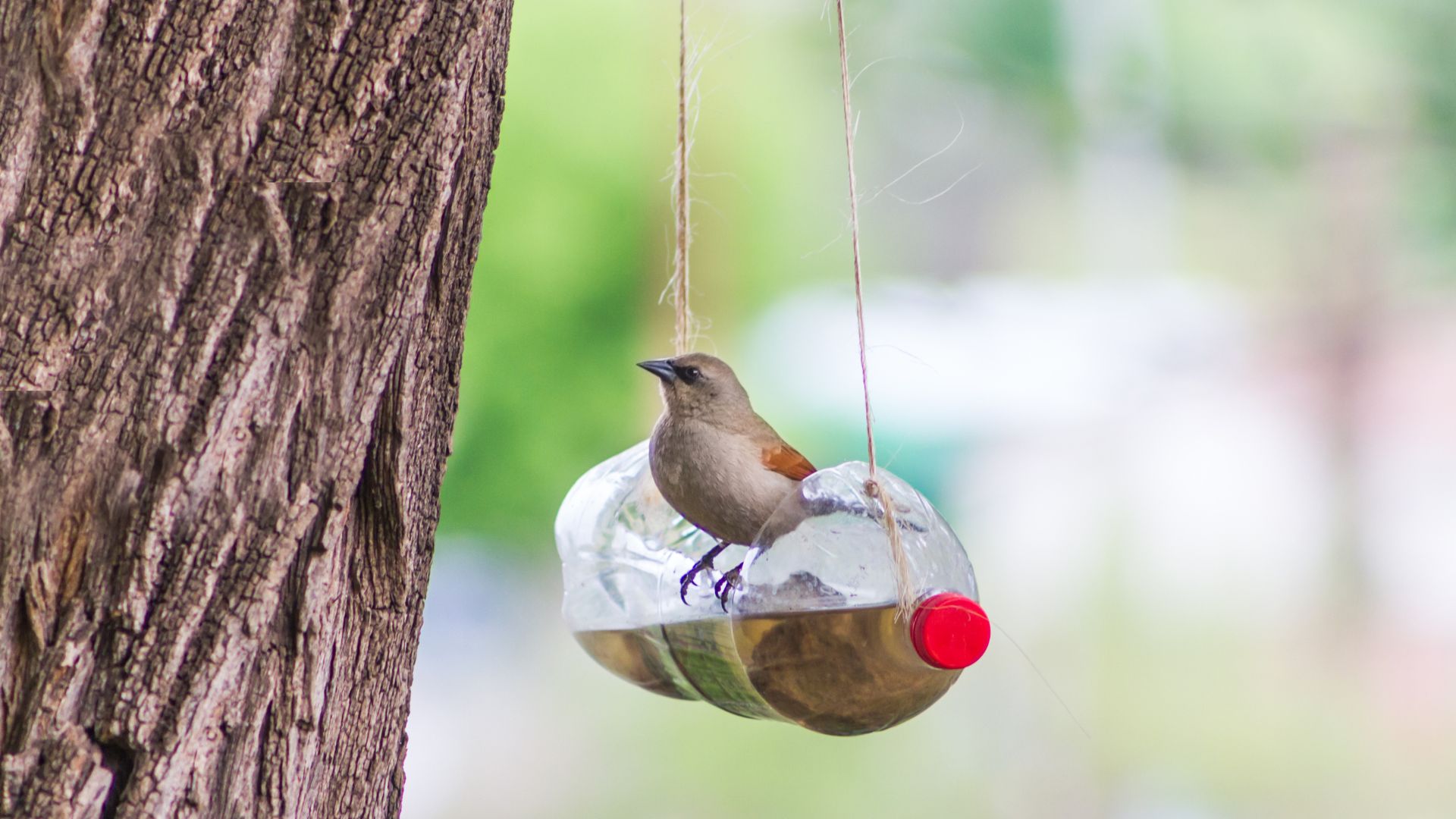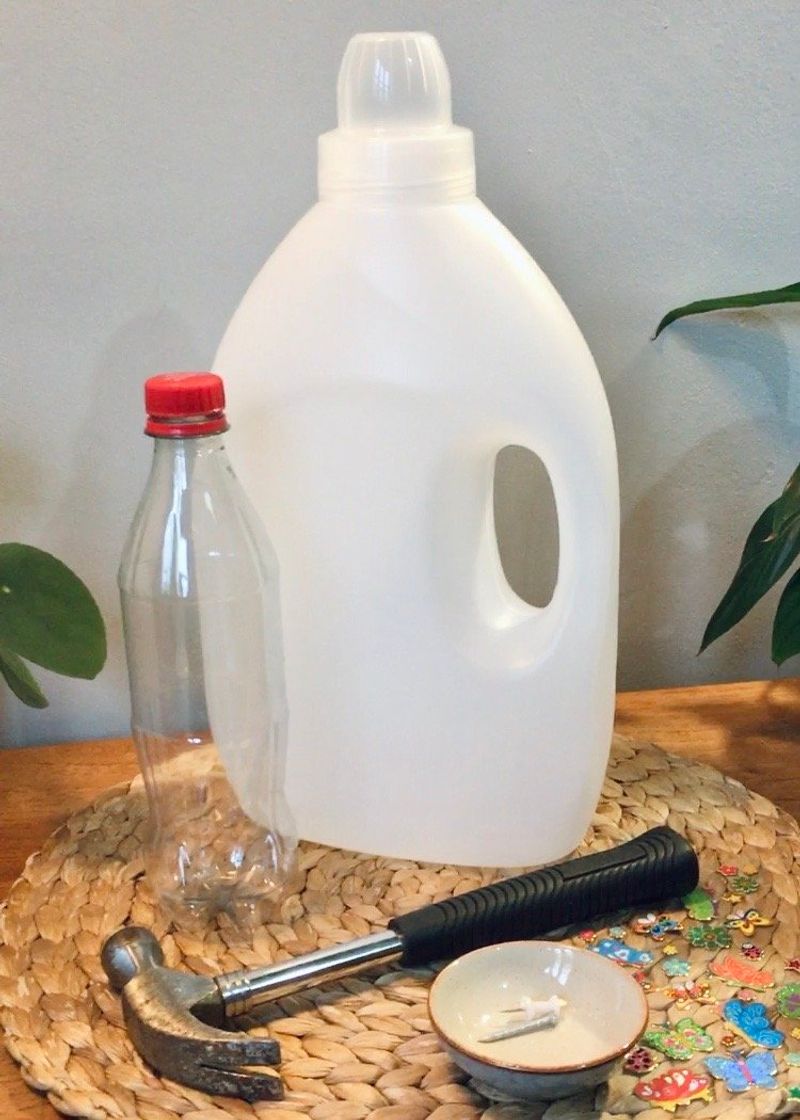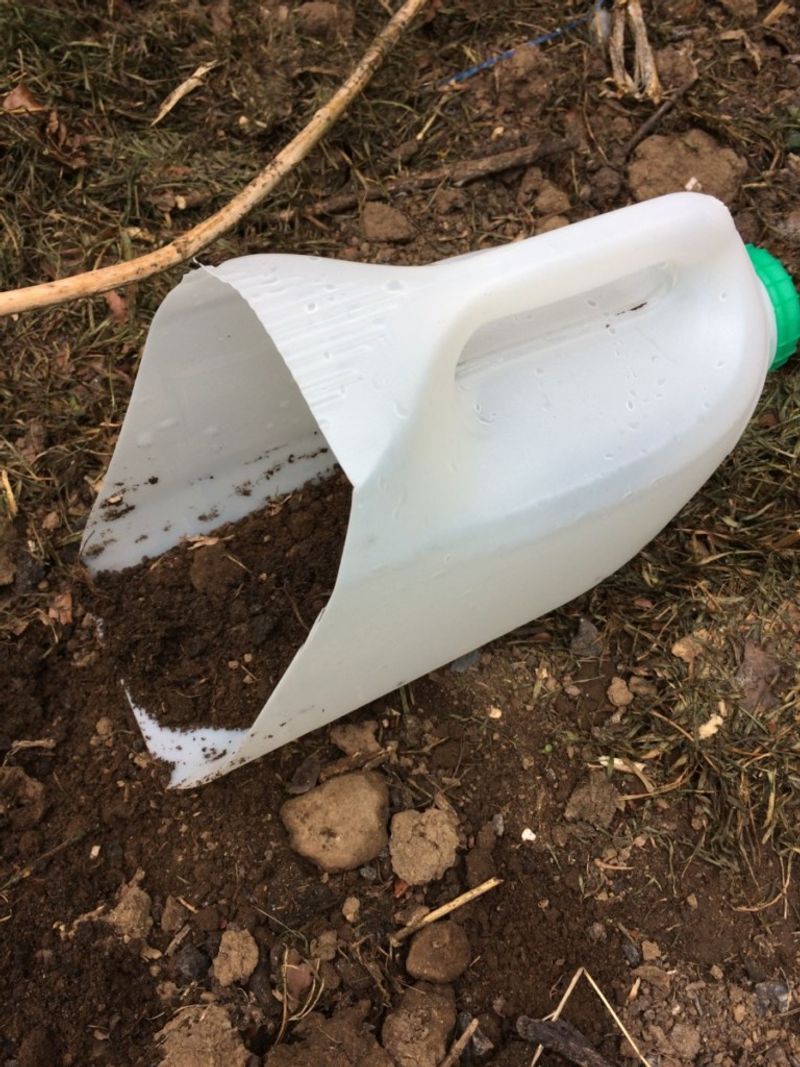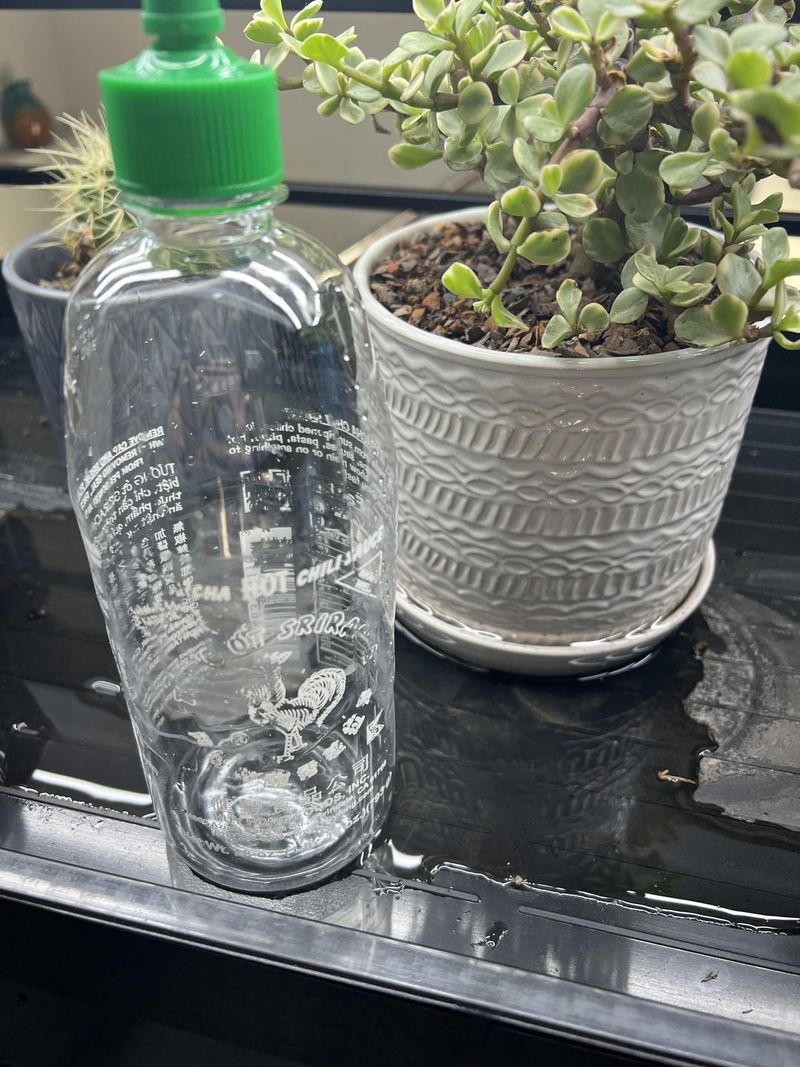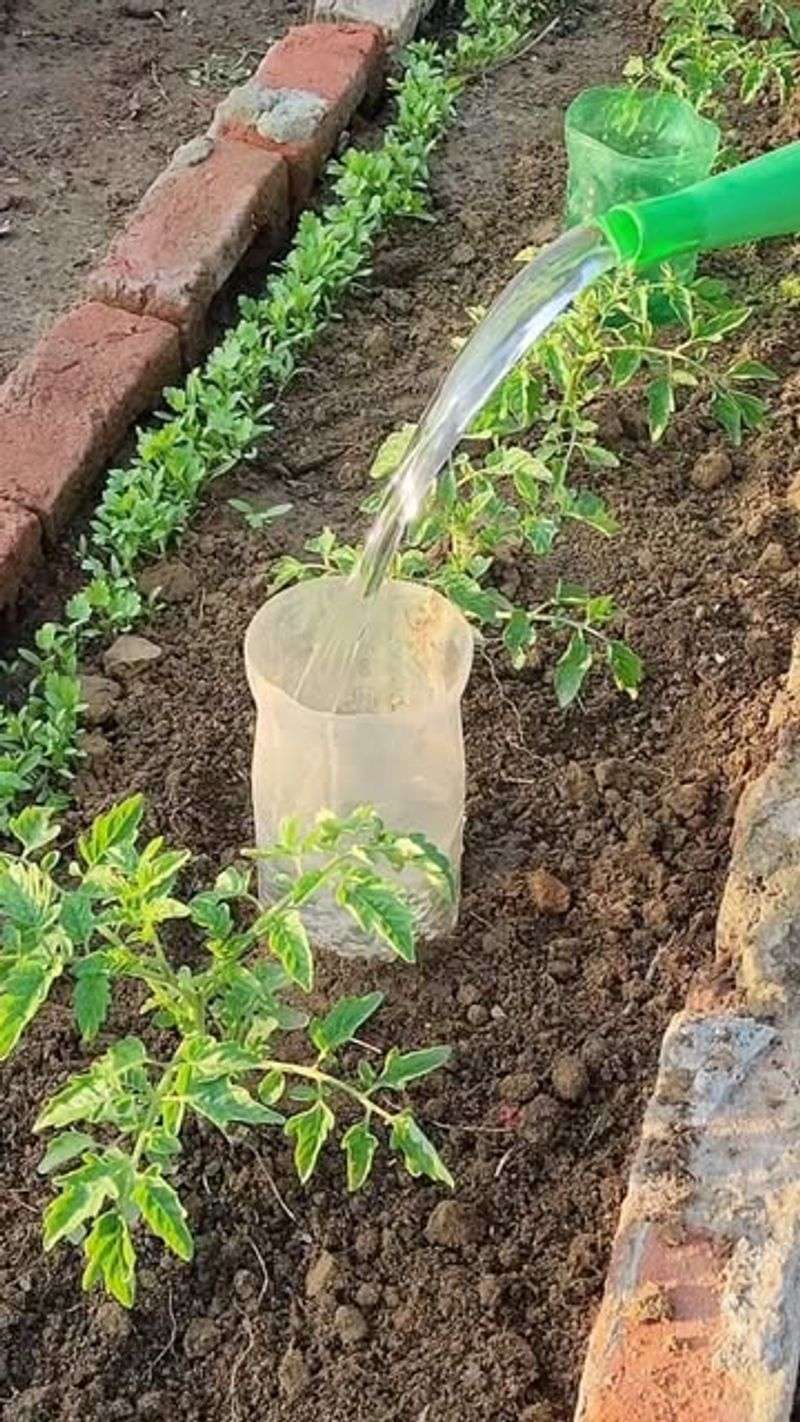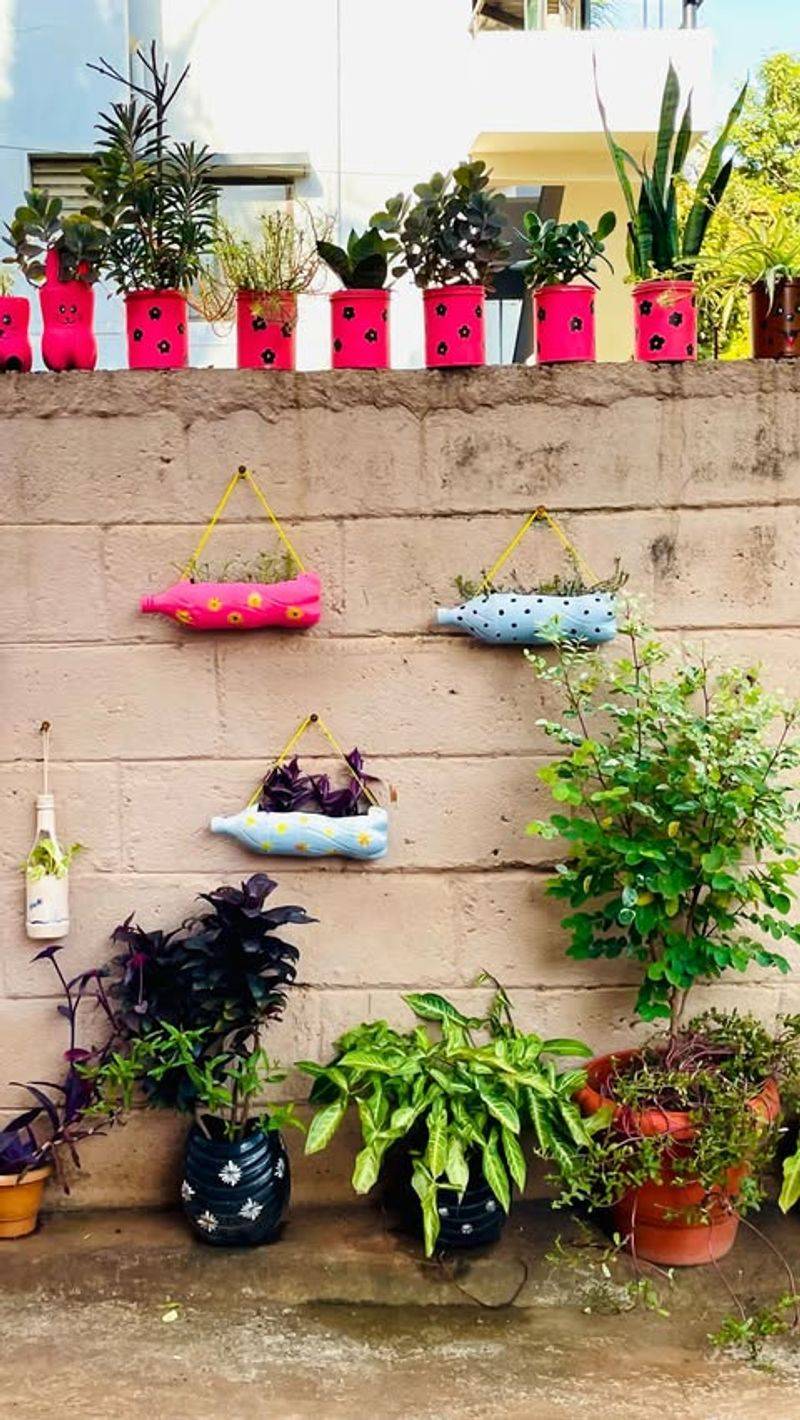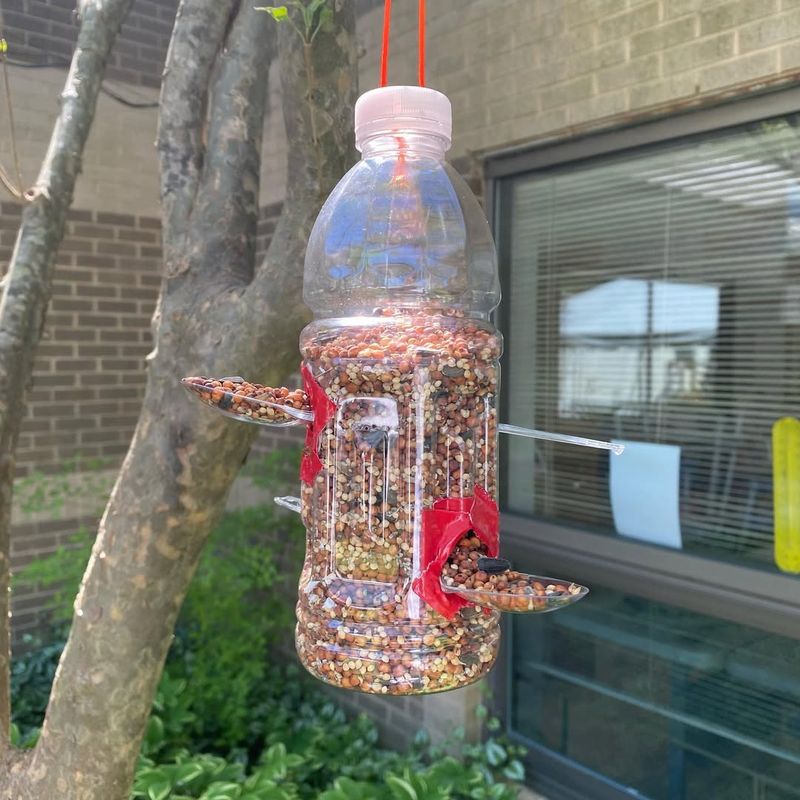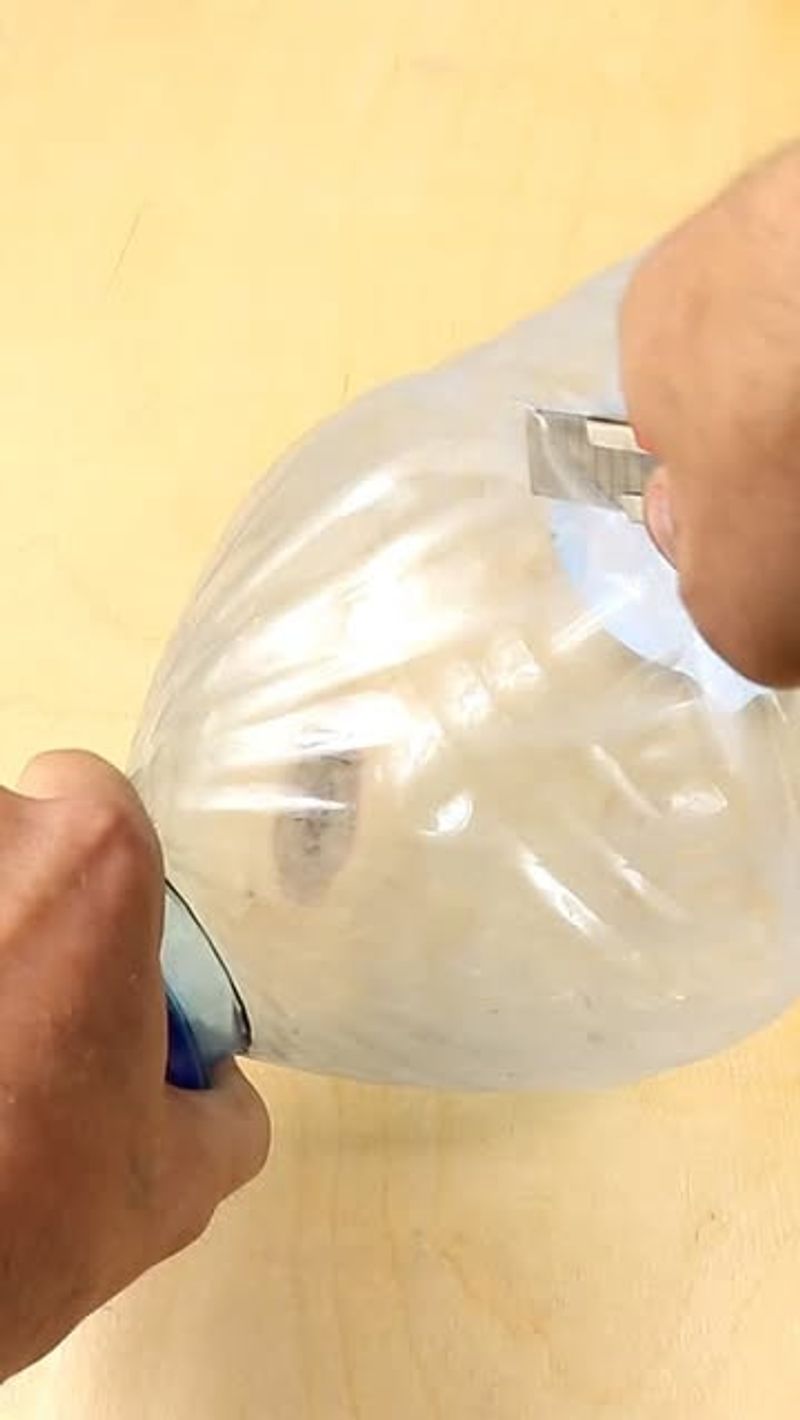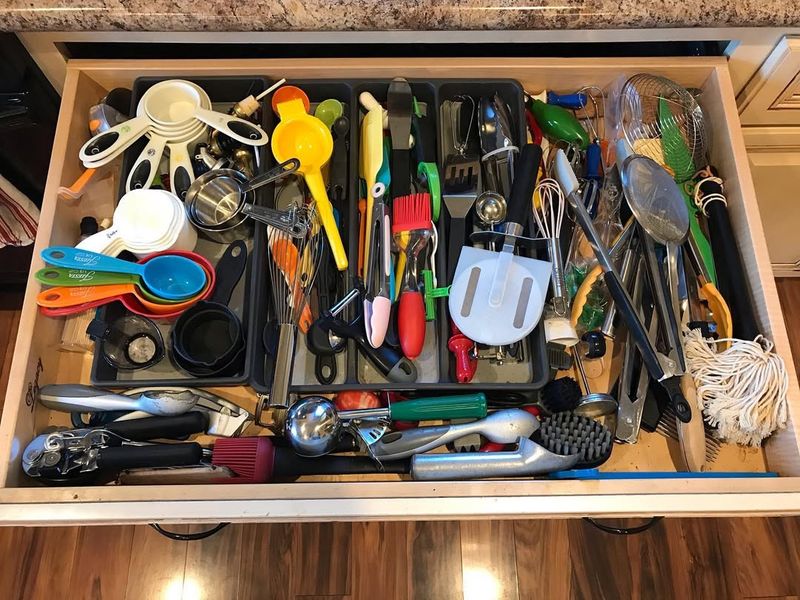If you’ve got a pile of plastic containers waiting to be tossed, hold up—your garden might just thank you for them. As someone who’s always looking for ways to cut waste and save a little money, I’ve found that these everyday items can be total game-changers outdoors.
There’s a lot you can do with what you already have. And honestly, it feels pretty satisfying to give plastic a second life instead of sending it to the bin. These ideas are easy, useful, and even a little fun—plus, they add a personal touch to your garden setup.
Whether you’re starting seeds or organizing tools, there’s a clever use for almost any plastic container. Let’s get creative and make your garden a little greener in every way.
1. Watering Can
Ever found yourself without a watering can at the most inconvenient time? Simply grab an empty milk jug. By drilling a few small holes into the cap, you instantly have a makeshift watering can. The handle makes it easy to control the flow of water.
The durability of the plastic ensures it won’t crack easily under pressure or sun exposure. Plus, it’s lightweight enough to carry around your garden. Personalize your jug with paint or stickers, making it uniquely yours.
This simple hack not only saves money but also reduces waste, turning a common item into something remarkably useful.
2. Plant Markers
Keeping track of your plants can be a hassle, especially when they’re just sprouting. Cut strips from any sturdy plastic container, and use a permanent marker to jot down plant names.
These homemade markers withstand rain and sun, unlike paper labels that easily fade. They’re reusable, so just wipe them clean at the end of the season and use them again.
It’s a sustainable way to manage your garden, and it’s satisfying to see the transformation from trash to tool. Let your creativity shine by decorating these markers with colorful designs.
3. Seed Starters
Starting seeds can be intimidating, but you don’t need expensive equipment. Small plastic containers like yogurt cups are perfect for the job. Poke a few drainage holes at the bottom to ensure healthy root growth.
Fill with potting soil and plant your seeds; it’s as simple as that. Once the seedlings are ready, transplant them into your garden.
These cups are the ideal size for starting plants on a windowsill or greenhouse. They offer a great way to upcycle and are an excellent introductory project for kids learning about gardening.
4. Mini Greenhouse
Creating a greenhouse doesn’t require a lot of space or money. By cutting a plastic bottle in half and placing it over young plants, you create a mini greenhouse.
This method protects seedlings from harsh weather while trapping moisture and warmth, promoting faster growth. It’s particularly useful during unpredictable early spring weather.
Reusing bottles this way extends their life cycle and adds a protective layer to your gardening efforts. Clear bottles work best, allowing maximum sunlight to reach your plants.
5. Soil Scoop
Who knew a milk jug could double as a soil scoop? By cutting the jug at an angle, you can create a tool perfect for scooping soil or fertilizer.
The handle remains intact, offering easy grip and control, making the task less messy. This scoop is lightweight, washable, and can handle various gardening substances.
Transforming a jug into a scoop is both economical and efficient. It’s a simple project that emphasizes resourcefulness and provides a practical tool for daily garden tasks.
6. Slug Trap
Battling slugs in your garden? A shallow plastic lid can become an effective slug trap. Pour beer into the lid and place it in your garden overnight.
The yeast in beer attracts slugs, keeping them away from your precious plants. It’s a natural and non-toxic method, perfect for organic gardeners.
Repurposing container lids not only tackles a garden pest but also creatively recycles plastics. Reuse lids from various containers to keep the garden pest-free and eco-friendly.
7. Garden Sprayer
Repurposed spray bottles are fantastic for misting plants or applying homemade fertilizers. Just fill with water or diluted plant feed, and you’re set!
These bottles are adjustable, allowing you to control the mist’s intensity, which is ideal for delicate plants. They’re also easy to clean and reuse.
Using old spray bottles supports sustainable gardening by minimizing waste. They’re versatile and handy for any gardener looking to nurture their plants carefully.
8. Compost Bin
Turning kitchen scraps into garden gold is easier with a DIY compost bin. A large plastic container with some holes drilled in for airflow is perfect.
Layer kitchen waste, garden clippings, and brown materials, turning occasionally for rich compost. This method is compact, ideal for small spaces.
Recycling a plastic container for composting promotes environmental sustainability. It’s rewarding to see waste transform into nutrient-rich soil, feeding your garden naturally.
9. Drip Irrigation
Drip irrigation sounds sophisticated, but a plastic bottle can do the trick. Poke small holes in the cap, bury the bottle near plant roots, and fill with water.
This slow-release system ensures plants receive consistent moisture, crucial during dry spells. Adjust the number of holes based on your garden’s needs.
Using bottles for irrigation conserves water and reduces waste. It’s an excellent solution for gardeners seeking efficiency and sustainability.
10. Hanging Planters
Ever wanted a vertical garden? Cut plastic bottles in half, paint them, and hang with string or wire. These planters brighten up any space.
They’re perfect for herbs, strawberries, or small flowers. Drill drainage holes at the bottom to prevent soggy soil.
This project not only reuses bottles but also adds greenery to tight spots. It’s a fun way to personalize your garden and encourage creativity.
11. Bird Feeder
Bringing wildlife into your garden is rewarding. Craft a bird feeder using a plastic bottle. Cut openings, add wooden perches, and fill with seeds.
Hang it from a tree, and watch birds flock to your yard. This feeder is durable and easy to refill, perfect for year-round use.
Recycling bottles into bird feeders supports local wildlife, making your garden lively while reducing plastic waste. It’s a gratifying project for nature lovers.
12. Garden Funnel
Transferring soil without spilling is a challenge. Cut the top off a plastic bottle to create a funnel that makes this task a breeze.
This funnel is handy when filling pots or seed trays, ensuring no wastage of soil or seeds. It’s lightweight and easy to clean.
Repurposing bottles into funnels streamlines gardening tasks, proving that simple ideas can offer great solutions. It’s an efficient way to reuse plastic creatively.
13. Root Waterer
Getting water directly to a plant’s roots can be tricky. Cut the bottom off a bottle and bury it near the roots, opening at the top.
Fill with water, and it will seep directly to the roots, promoting deep growth. This method is especially beneficial for shrubs and trees.
This root watering technique makes use of discarded bottles, ensuring plants thrive with minimal water use. It’s efficient and eco-friendly.
14. Garden Cloche
Protect young plants from pests with a simple cloche. Cut the bottom off a soda bottle and place it over your vulnerable seedlings.
The clear plastic acts as a barrier against insects while allowing sunlight to nourish your plants. This method is cost-effective and easy to implement.
Reusing bottles this way saves young plants from being nibbled away, highlighting a clever use of plastics in gardening.
15. Sprout Grower
Growing sprouts is a nutritious gardening project. Use a plastic container with holes in the lid as a sprouter. Rinse and drain seeds daily for fresh sprouts.
This method is perfect for small kitchens or those new to gardening. Sprouts are ready in days, providing a quick, healthy addition to meals.
Recycling containers for sprouting minimizes waste while promoting healthy eating. It’s a simple, rewarding process that brings gardening indoors.
16. Herb Drying Rack
Drying herbs extends their shelf life. Create a drying rack using a plastic container, cutting holes for string to hang herbs.
Place in a sunny spot, and nature will do the rest. This project is ideal for preserving garden freshness year-round.
Repurposing containers into drying racks is an inventive way to utilize kitchen scraps while enjoying your garden’s bounty longer.
17. Garden Tool Holder
Organizing tools can be a hassle. Transform a plastic jug into a tool holder by cutting an opening and mounting it on a wall.
Store hand trowels, gloves, and twine neatly, keeping your workspace tidy. This holder is durable and easy to clean.
Using jugs as organizers keeps your garden shed orderly while upcycling waste. It’s a practical solution for clutter-free gardening.

